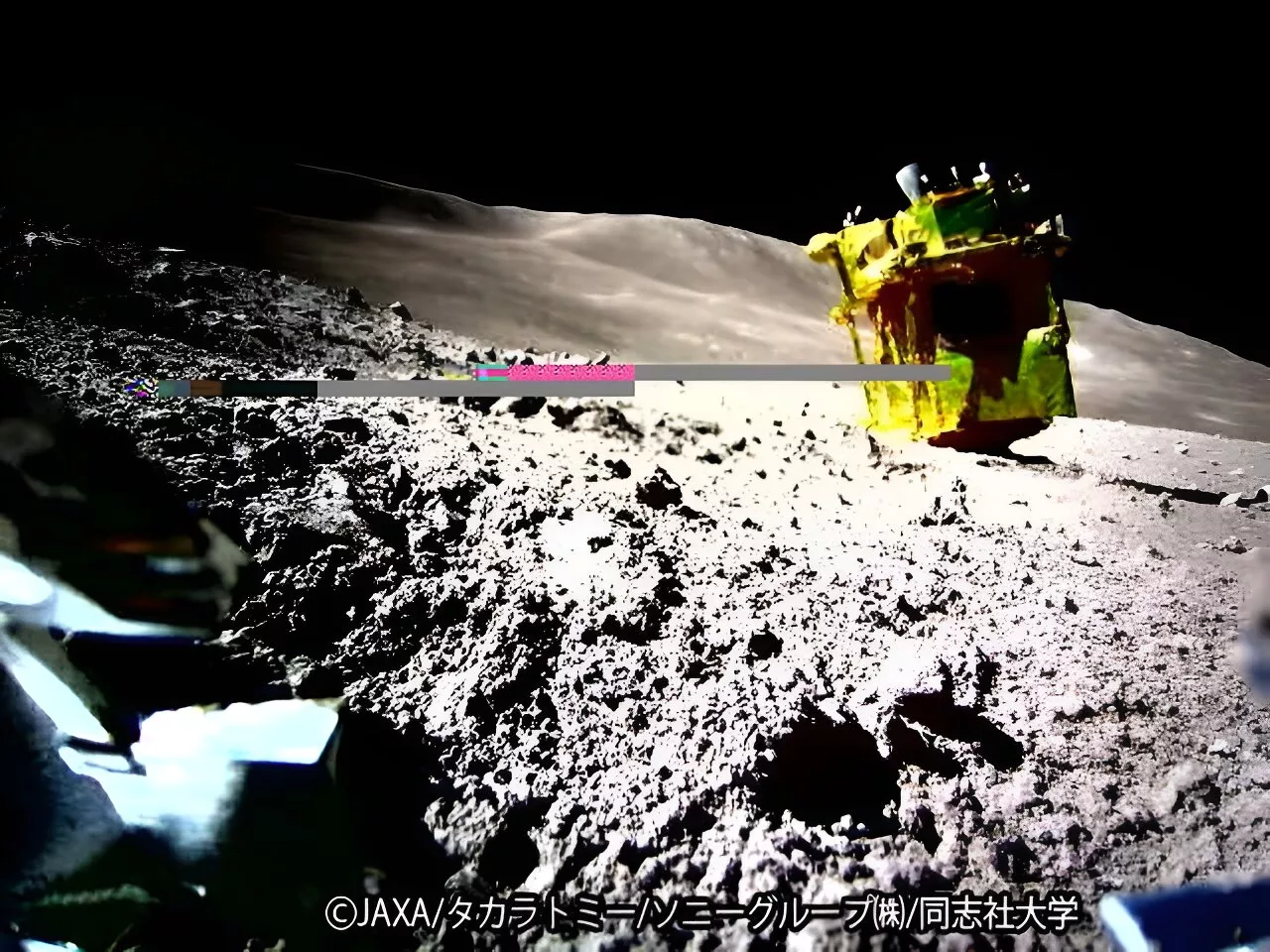Japan’s moon lander woke up after unexpectedly surviving a second frigid, two-week lunar night and transmitted new images back to Earth, the country’s space agency said Thursday.
The unmanned Smart Lander for Investigating Moon (SLIM) probe touched down in January, making Japan only the fifth nation to reach the lunar surface without crashing.
But the lightweight spacecraft landed at a wonky angle that left its solar panels facing the wrong way.
The Japan Aerospace Exploration Agency announced the probe’s latest surprise awakening in a post on X, formerly Twitter.
“We received a response from SLIM last night and confirmed that SLIM had successfully completed its second overnight,” it said.
A black-and-white photo of the rocky surface of a crater accompanied the post on SLIM’s official account.
“Since the sun was still high in the sky… and the equipment was still hot, we recorded images of the usual scenery with the navigational camera, among other activities, for a short period of time,” it said.
Thursday’s news came after an uncrewed American lander called Odysseus—the first private spaceship to successfully land on the moon—had failed to wake up.
Its manufacturer, the Houston-based Intuitive Machines, had hoped the lander might revive like Japan’s SLIM, but on Saturday declared the lander’s mission over.
The Intuitive Machines spaceship also landed at the wrong angle but was able to complete several tests and send back photos before the most recent lunar night began.
‘Moon Sniper’
JAXA has dubbed SLIM the “Moon Sniper” for its precision landing technology.
The aim of its mission was to examine a part of the moon’s mantle—the usually deep inner layer beneath its crust—believed to be accessible at the crater where it landed.
About three hours after its nail-biting touchdown on January 20, JAXA switched the lander off remotely to save power, having received technical and image data from its descent.
As the sun’s angle shifted, the probe came back to life in late January for two days and carried out scientific observations of a crater with a high-spec camera.
JAXA says the spacecraft was “not designed for the harsh lunar nights”, when the temperature plunges below minus 130 degrees Celsius (-200 degrees Fahrenheit).
So scientists had cause for celebration when SLIM successfully woke up in late February against the odds.
The SLIM saga has been a boon for the space agency after a string of high-profile failures, including two previous Japanese lunar missions—one public and one private.
The country unsuccessfully sent a lunar probe named Omotenashi as part of the United States’ Artemis 1 mission in 2022.
Then in April 2023, Japanese startup ispace lost communication with its craft after what it described as a “hard landing”.
This year Japan’s space fortunes have also been mixed.
In February JAXA toasted a successful blast-off for its new flagship H3 rocket.
But two weeks ago a different rocket made by the Tokyo-based company Space One exploded into flames in a spectacular failure for the start-up’s bid to put a satellite into orbit.
© 2024 AFP
Citation:
Japan moon probe survives second lunar night (2024, March 28)
retrieved 28 March 2024
from
This document is subject to copyright. Apart from any fair dealing for the purpose of private study or research, no
part may be reproduced without the written permission. The content is provided for information purposes only.
Reference :
Reference link

























+ There are no comments
Add yours